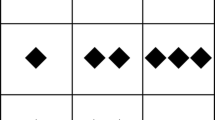Abstract
Ramsey, Stich and Garon's recent paper ‘Connectionism, Eliminativism, and the Future of Folk Psychology’ claims a certain style of connectionism to be the final nail in the coffin of folk psychology. I argue that their paper fails to show this, and that the style of connectionism they illustrate can in fact supplement, rather than compete with, the claims of a theory of cognition based in folk psychology's ontology. Ramsey, Stich and Garon's argument relies on the lack of easily identifiable symbols inside the connectionist network they discuss, and they suggest that the existence of a system which behaves in a cognitively interesting way, but which cannot be explained by appeal to internal symbol processing, falsifies central assumptions of folk psychology. My claim is that this argument is flawed, and that the theorist need not discard folk psychology in order to accept that the network illustrated exhibits cognitively interesting behaviour, even if it is conceded that symbols cannot be readily identified within the network.
Similar content being viewed by others
References
Armstrong, D. M. (1973), Belief, Truth and Knowledge, Cambridge: Cambridge University Press.
Armstrong, D. M. and Malcolm, N. (1984), Consciousness and Causality, Oxford: Basil Blackwell.
Bechtel, W. (1988), ‘Connectionism and Rules and Representation Systems: Are They compatible?’, Philosphical Psychology 1 (1), pp. 5–16.
Clark, A. (1989), ‘Connectionism and the Multiplicity of Mind’, Artificial Intelligence Review 3, pp. 49–65.
Cottrel, G. (1987), ‘Toward Connectionist Semantics’, Proceedings of Theoretical Issues in Natural Language Processing 3, pp. 63–67.
Churchland, P. M. (1981), ‘Eliminative Materialism and the Propositional Attitudes’, Journal of Philosophy 78 (2), pp. 67–90.
Churchland, P. M. (1984), Matter and consciousness, Massachusetts: MIT Press.
Churchland, P. M. and Churchland, P. S. (1981), ‘Functionalism, Qualia and Intentionality,’ Philosophical Topics 12 (1), pp. 121–146.
Dennett, D. C. (1983), ‘Styles of Mental Representation’, Proceedings of the Aristotelian Society, Vol. LXXXIII 1982/3. Reprinted in Dennett [1987].
Dennett, D. C. (1987), The Intentional Stance, Massachusetts: MIT Press.
Fodor, J. (1975), The Language of Thought, New York: Crowell.
Fodor, J. (1987), Psychosemantics, Massachusetts: MIT Press.
Fodor, J. and Pylyshyn, Z. (1988), ‘Connectionism and Cognitive Architecture: A Critical Analysis’, Cognition 28, pp. 3–71.
Harnard, S. (1989), ‘The Symbol Grounding Problem’, Physica D 42 (1–3), pp. 335–346.
Haugeland, J. (1982), ‘Weak Supervenience’, American Philosophical Quarterly 19 (1), pp. 93–104.
Haugeland, J. (1985), Artificial Intelligence: The Very Idea, Cambridge, Massachusetts: MIT Press.
Hawthorne, J. (1989), ‘On the Compatibility of connectionist and Classical Models’, Philosophical Psychology 2 (1), pp. 5–15.
Hinton, G. E. and Anderson, J. A. (1981), Parallel Models of Associative Memory, Hillsdale, N. J.: Erlbaum.
Jackson, F. and Pettit, P. (forthcoming a), ‘In Defence of Folk Psychology’ to appear in Philosophical Studies.
Jackson, F. and Pettit, P. (forthcoming b), ‘Causation and the Philosophy of Mind’ to appear in Philosophy and Phenomenological Research.
Kim, J. (1978), ‘Supervenience and Nomological Incommensurables’, American Philosophical Quarterly 15 (2), pp. 149–156.
Kim, J. (1982), ‘Psychophysical Supervenience’, Philosophical Studies 41, pp. 51–70.
McClelland, J. L. and Rumelhart, D. E. (1985), ‘Distributed Memory’, Journal of Experimental Psychology: General 114 (2), pp. 159–189.
Newell, A. (1981) ‘Physical Symbol Systems’ in Norman, D. A. (ed.), Perspectives on Cognitive Science, Norwood, N.J.: Ablex.
Pinker, S. and Prince, A. (1988), ‘On Language and connectionism: Analysis of a PDP model of Language Acquisition’, Cognition 28, pp. 73–193.
Pollack, J. B. (1989), ‘Connectionism: Past, Present and Future’, Artificial Intelligence Review 3, pp. 3–20
Prior, E. (1985), Dispositions, Aberdeen: Aberdeen University Press.
Ramsey, W., Stich, S, and Garon, J. (1990), ‘Connectionism Eliminativism and the Future of Folk Psychology’ in Tomberlin, J. E. (ed.), Philosophical Perspectives 4: Action Theory and the Philosophy of Mind, Atascadero, California: Ridgeview Publishing Co., pp. 499–533.
Rumelhart, D. E. and McClelland, J. L. (eds) (1986), Parallel and Distributed Processing (Vols 1 and 2), Massachusetts: MIT Press.
Shastri, L. (1988), ‘A Connectionist Approach to Knowledge Representation and Limited Inference’, Cognitive Science 12, pp. 331–392.
Smolensky, P. (1988), ‘On the Proper Treatment of connectionism’, Behavioral and Brain Sciences 11, pp. 1–78.
Stalnaker, R. C. (1984), Inquiry, Massachusetts: MIT Press.
Stich, S. P. (1983), From Folk Psychology to Cognitive Science, Massachusetts: MIT Press.
Touretzky D. (1989), ‘Rules and Maps in Connectionist Symbol Processing’, Carnegie Mellon Technical Report CMU-CS 89-158.
Viscuso, S. R., Anderson, J. A., and Spoehr, K. T. (forthcoming), ‘Representing Simple Arithmetic in Neural Networks’ in Tiberghien, G. (ed), Advanced Cognitive Science: Theory and Applications (in press).
Author information
Authors and Affiliations
Additional information
This paper was in part prepared whilst I was a Vacation Scholar at the Automated Reasoning Project, Australian National University. It was presented in its present form to the Department of Philosophy, Institute of Advanced Studies, ANU. I owe a deep gratitude to many people who read and commented on earlier drafts of this paper, especially Phillip Staines and Phillip Cam from UNSW, Ed Mares from the Automated Reasoning Project at the ANU, and Frank Jackson, Karen Neander and David Braddon-Mitchell from the Philosophy Department, IAS, ANU. All the paper's faults are, of course, mine.
Rights and permissions
About this article
Cite this article
Clapin, H. Connectionism isn't magic. Minds and Machines 1, 167–184 (1991). https://doi.org/10.1007/BF00361035
Issue Date:
DOI: https://doi.org/10.1007/BF00361035




